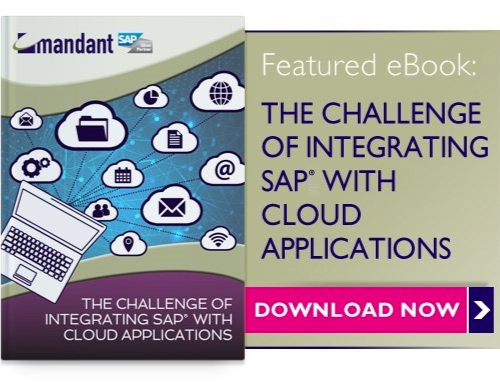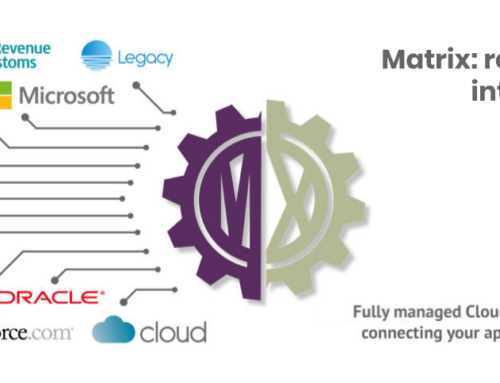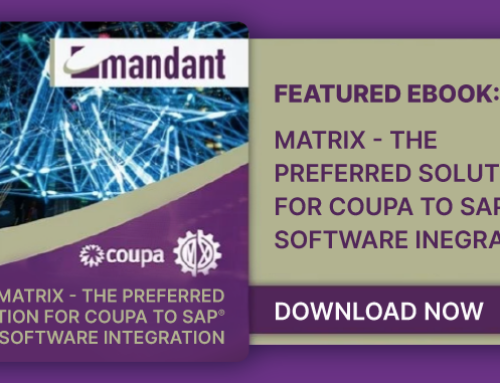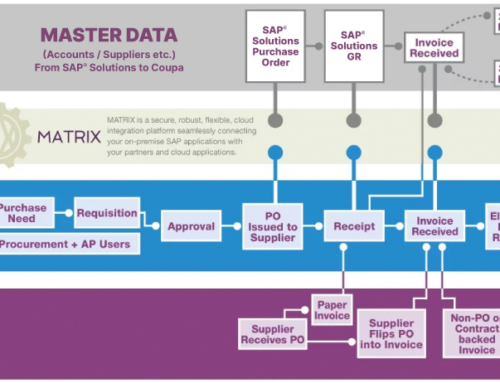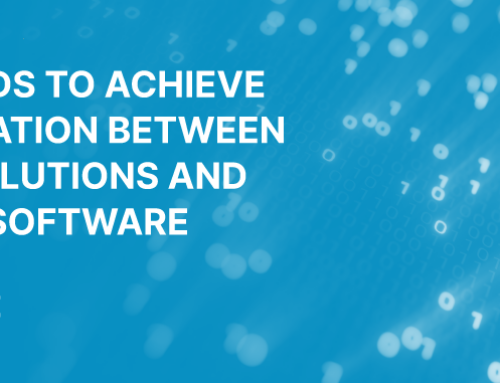Evolving SaaS technology is giving business functional leaders more control over the selection of the business application software that they want to use to manage their area of the business. Finance, sales and HR to name but three now have a host of SAAS applications to choose from.
It’s common to see businesses implementing SAP® technology for their core operations together with a range of SaaS applications such as Salesforce, Concur, Coupa, SuccessFactors and MicrosoftDynamics.
Whilst niche software promises to deliver real business benefits in their own specialist area, they leave IT with the challenge of integrating applications and data in order to streamline the whole business.
A robust integration platform is needed to:
- fully realise the benefits of cloud-based applications
- synchronise data across multiple sources
- automate and optimise business processes
- deliver on the promise of agility and flexibility to meet user demands.
Added to that, there are time pressures on IT to deliver that integration. Many of the latest SaaS applications come with rapid rollout plan and there can be a sense of frustration whilst business departments wait for IT to carry out integration work before being able to go live.
So what are the most common SAP® applications integration challenges? Let’s take a look at some of the top ones split between Business Operations and Technical.
Business Operations Challenges:
- Meeting strategic business goals – It’s not uncommon for departments e.g. Sales to quickly deploy an application such as Salesforce. However, the processes sales go through to meet their strategic goals of increasing revenue might involve access to data from the core SAP® solutions system (purchase history and pricing, for example). This means that whilst Salesforce standalone can drive some benefits to a sales team, it is the integration to the core SAP system that impacts their ability to achieve their business goals. Any delay or complexity in the delivery of the integration will impact the ability to use that SaaS software to meet strategic business goals.
- Managing complex business processes and data – In some business process scenarios SAP® solutions data may need to be accessed in real-time from two separate applications from two separate vendors. In others, SAP may be the recipient of data from those same systems. For example, customer data may be held in a Marketing Automation system, a CRM solution and in SAP. The contact record may have been sourced via Marketing Automation, passed to CRM and ended up in SAP as a customer. However, when the business wants to carry out a customer-based marketing campaign the data should be obtained from a master record. Careful planning is needed to determine which of the three solutions should provide the master data, how all data should be kept in sync and how data flows from one system to the others.
- Maintain flexibility – For businesses who want to implement SaaS solutions, it’s vital that the underlying integration architecture can support rapid deployment and easily support any subsequent changes. The integration architecture shouldn’t limit the ability for the business to take advantage of new functionality as and when it becomes available within their SaaS solution. A flexible integration architecture will enable the business to drive the benefits of new functionality quickly.
Technical Challenges:
- Scalability – An integration infrastructure needs to be able to scale to cope with growing volumes of data and may need to provide real-time data access for dashboards and reporting across data from multiple applications.
- Technical skills – Building connectivity into SAP® solutions and introducing new applications from different SaaS vendors requires a range of skills and some knowledge about the architecture of each application.
- On-going maintenance and upgrade costs – Integration middleware and the required support needs to be able to cope with upgrades and significant changes to functionality (at both SAP® technology and SaaS ends). The cost of this needs to be factored into the ongoing maintenance costs for any SAP-SaaS integration.
There are a few options available to support SAP® solutions integration into SaaS applications, ranging from building from scratch to out-of-the-box.
Our whitepaper goes deeper into the challenges of integrating SAP® solutions with SaaS applications and suggests options and solutions for creating a SAP-SaaS integration infrastructure.


